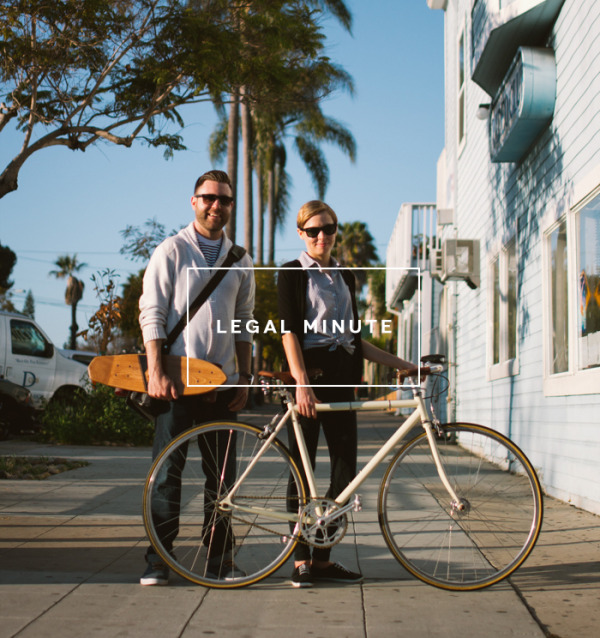Legal Minute: Your Brand Is Your Storefront, So Protect It With a Trademark
If you are reading Conscious Magazine, chances are you have—or will—launch an innovative business that deserves protecting.
To protect your brand, you should look into applying for official Trademark protection. What is a Trademark, you ask? Great question.
The legal definition of a Trademark is any mark (word, slogan, symbol, design, logo, or combination of these) that: (1) identifies the source of goods and/or services; and (2) distinguishes the goods and/or services from those of another person or business. Interestingly enough, anything can be a trademark (sound, color, or even smell!) as long as it identifies the source of the good and/or services, and distinguishes it from other goods and/or services. It is important to distinguish between Trademark protection, Copyright protection, and Patent protection. Patents protect inventions (new designs and new utility to inventions). Copyrights protect original artistic and literary works (protects against direct copying and repurposing of such creative works). Essentially, you would apply for Trademarks to protect your branding, apply for Copyrights to protect your photographs, artistic expressions, or creative products, and you would apply for Patents to protect your innovative technology.
But, why is it so important to register your trademark with the United States Patent and Trademark Office (USPTO)? Well, the default application of law says that Trademark rights are created through use of your brand in commerce, even without USPTO registration. Yes, just by simply using your logos and branding you gain Trademark protection over those logos and branding assets. These rights are limited, however, to the geographic area where your commerce takes place and without conducting a search and formal application you could be unknowingly using someone else’s logos and/or branding. This creates the potential for a few problems: (1) it presents a difficulty policing your Trademark outside of your geographic area; (2) you could be infringing on another person or company’s logos and branding, albeit unknowingly, and in doing so subject yourself to legal liability; and (3) other people may not know that your Trademark already exists, since it is not federally registered, and likewise, may unknowingly be using your logos and branding.
What does this all mean to you? It means that while USPTO registration of a Trademark is not required, it will greatly enhance your rights. Specifically, registering your Trademark with the USPTO will: (1) create the legal presumption that you own the logo(s) and that you have the exclusive right to use the logo(s) in the U.S.; (2) put the public on notice of your ownership of the logo(s) by listing in the USPTO database; (3) give you the right to bring legal action concerning your logo(s) in a federal court; (4) if you plan to expand internationally, registration gives you the ability to use your U.S. Trademark registration as a basis for applying for Trademark registration in many foreign countries; and (5) registration allows you to use the “®” sign at the end your of logo(s) (as opposed to the ™ sign for unregistered trademarks). This instantly puts people on notice that you have legally protected your logo(s)…and it looks pretty cool, as well.
We realize this Legal Minute is a little wordy, but Trademark protection is both complex and very important. In a world where everything is becoming increasingly digital, and therefore increasingly available to anyone with a screen, your brand is your storefront. Gone are the days of newspaper ads and having a great sign out front to attract customers; your logos and your eye-catching branding bring you business. We recommend that anyone with a growing business consult an attorney to ensure that no one else is diverting your business by using your branding.
Disclaimer: The information in this article is presented for informational purposes only, and should not be taken as legal advice. Before acting on any information presented in this article, you should consult an attorney regarding the facts of your specific situation. We would love to hear from you, so please feel free to contact Wilkinson Mazzeo for a consultation.
Photo: Rachel Ashley
Learn. Connect. Act.
Learn more about Wilkinson Mazzeo
Connect via Facebook and Twitter
Act If you found this helpful or have some insight yourself, then let us know with a comment below.
From the Editor
At Conscious, we are inspired by remarkable people, and so we set out to tell stories that highlight real human interactions and human dignity. You can read more stories like this when you pick up your copy of Conscious Magazine. Subscribe today via our Conscious Shop and subscribe to Conscious Updates.



